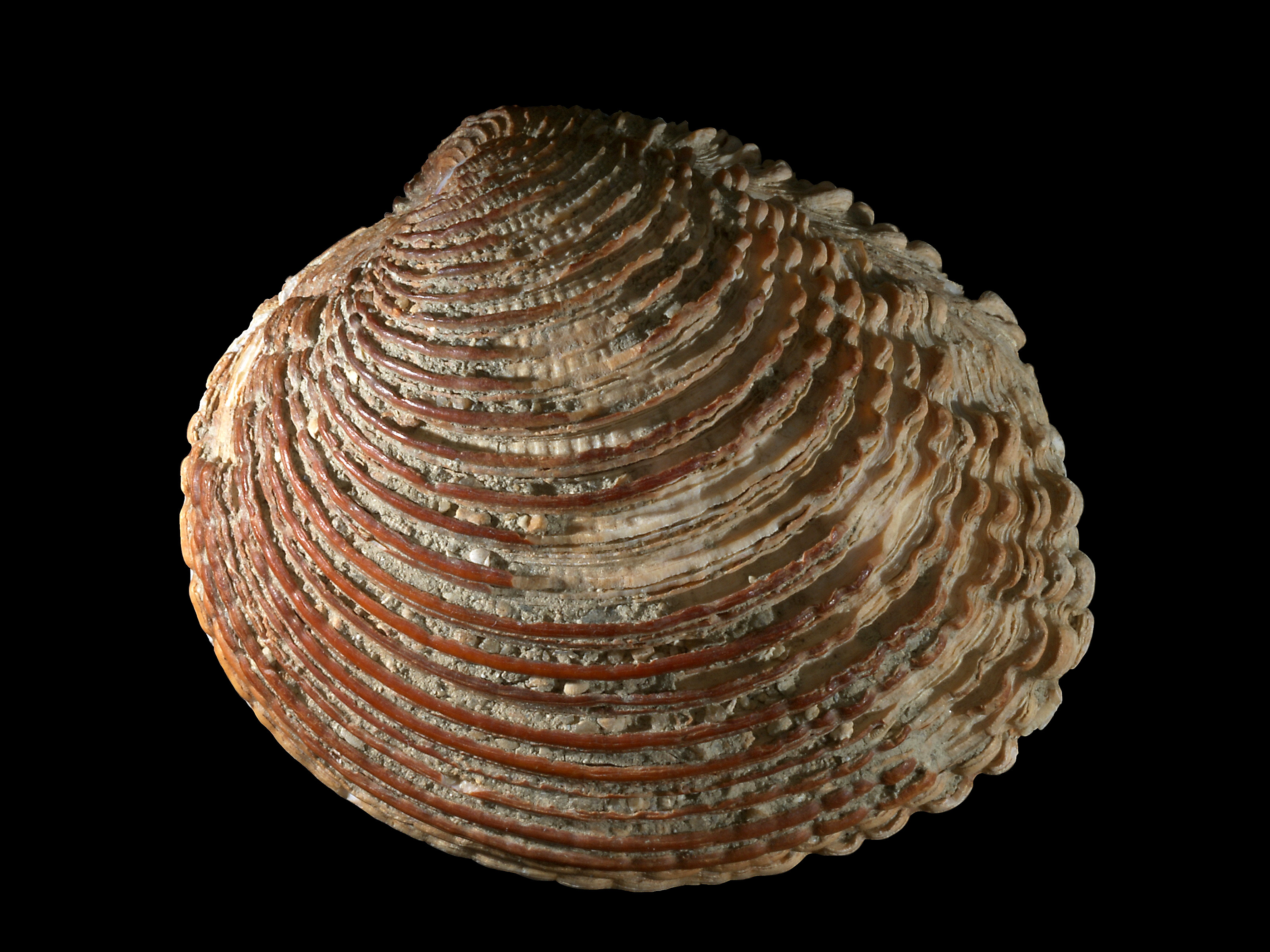- Veneridae
Taxobox
name = Veneridae

image_width = 175px
image_caption = "Venus verrucosa "
regnum =Animal ia
subregnum =Metazoa
branch =Bilateria
phylum =Mollusca
classis =Bivalvia
subclassis =Heterodonta
ordo =Veneroida
superfamilia =Veneroidea
familia = Veneridae
familia_authority = Rafinesque, 1815
subdivision_ranks = Genera
subdivision = See text.The Veneridae or venerids, also known as venus clams, are a very large family of minute to large, saltwater
clams , marinebivalve molluscs. There are over 500 living species of venerid, most of which are edible, and many of which are exploited as a food source.Many of the most important edible species are commonly known (in the USA) simply as "clams". Venerids make up a significant proportion of the world fishery of edible bivalves. The family includes some species that are important commercially, such as (in the USA) the
hard clam or quahog, "Mercenaria mercenaria ".The classification within the family Veneridae has been controversial at least since the
1930 s. The most used classification is that of Keen (1969) which recognises 12 subfamilies, listed below. Some common species have been moved between genera (including genera in different subfamilies) because of repeated attempts to bring a more valid organization to the classification ortaxonomy of the family, therefore changes in the generic name of species are frequently encountered.The characters used for classifying this group still tend to be superficial, focusing on external features, especially those of the shell. Further reclassification is to be expected as the results of current research in
molecular systematics on the group appear in the literature.ubfamilies according to Keen (1969)
* Chioninae
* Circinae
* Clementinae
* Cyclinae
* Dosiniinae
* Gemminae
* Meretricinae
* Pitarinae
* Samaranginae
* Sunettinae
* Vapetinae
* VenerinaeList of genera in the family Veneridae
(may be incomplete)
* "
Agriopoma Dall, 1902
* "Amiantis " Carpenter, 1884
* "Anomalocardia " Schumacher, 1817
* "Austrovenus " Finlay,1927
* "Bassina " Jukes-Browne, 1914
* "Callista" Poli, 1791
* "Chamelea " Morch, 1853
* "Chione" Megerle von Mühlfeld, 1811
* "Chionopsis " Olsson, 1932
* "Chionista " Keen, 1958
* "Circomphalus " Klein, 1853
* "Clausinella " J. E. Gray, 1851
* "Compsomyax " Stewart, 1930
* "Cyclinella " Dall, 1902
* "Dosina " Gray, 1835
* "Dosinia " Scopoli, 1777
* "Gafrarium " Roding, 1798
* "Gemma" Deshayes, 1853
* "Globivenus " Coen, 1934
* "Gouldia " C. B. Adams, 1847
* "Humilaria " Grant and Gale, 1931
* "Irus" Schmidt, 1818
* "Irusella " Hertlein and Grant, 1972
* "Lioconcha "
* "Liocyma " Dall, 1870
* "Lirophora " Conrad, 1883
* "Macrocallista " Meek, 1876
* "Mercenaria " Schumacher, 1817
* "Meretrix"Linnaeus , 1758
* "Notirus " Finlay, 1928
* "Notocallista " Iredale, 1924
* "Nutricola " Bernard, 1982
* "Parastarte " Conrad, 1862
* "Periglypta " Jukes-Browne, 1914
* "Pitar" Römer, 1857
* "Protothaca " Dall, 1902
* "Psephidia " Dall, 1902
* "Saxidomus " Conrad, 1837
* "Tapes" Muhlfeld, 1811
* "Tawera " Marwick, 1927
* "Timoclea " Brown, 1827
* "Tivela " Link, 1807
* "Transennella " Dall, 1883
* "Venerupis "Lamarck , 1818
* "Ventricolaria " Keen, 1954
* "Venus"Linnaeus , 1758References
* Keen, A. M. (1969). Superfamily Veneracea. pp. 670-690, in: Leslie Reginald Cox et al., Part N [Bivalvia] , Mollusca 6, vols. 1 and 2: xxxvii + 952 pp. Part of Raymond C. Moore, ed., Treatise on invertebrate paleontology. Lawrence, Kansas (Geological Society of America & University of Kansas).
* Powell A. W. B., "New Zealand Mollusca", William Collins Publishers Ltd, Auckland, New Zealand1979 ISBN 0-00-216906-1External links
* [http://peet.fmnh.org/ Taxonomy on the half shell] A major project of the Chicago
Field Museum of Natural History and theAmerican Museum of Natural History on Venerid classification
* [http://peet.fmnh.org/BibliographyA_C.html Bibliography of venerid taxonomy]
* [http://www.chez.com/malacos/htm/R48.HTM]
Wikimedia Foundation. 2010.
